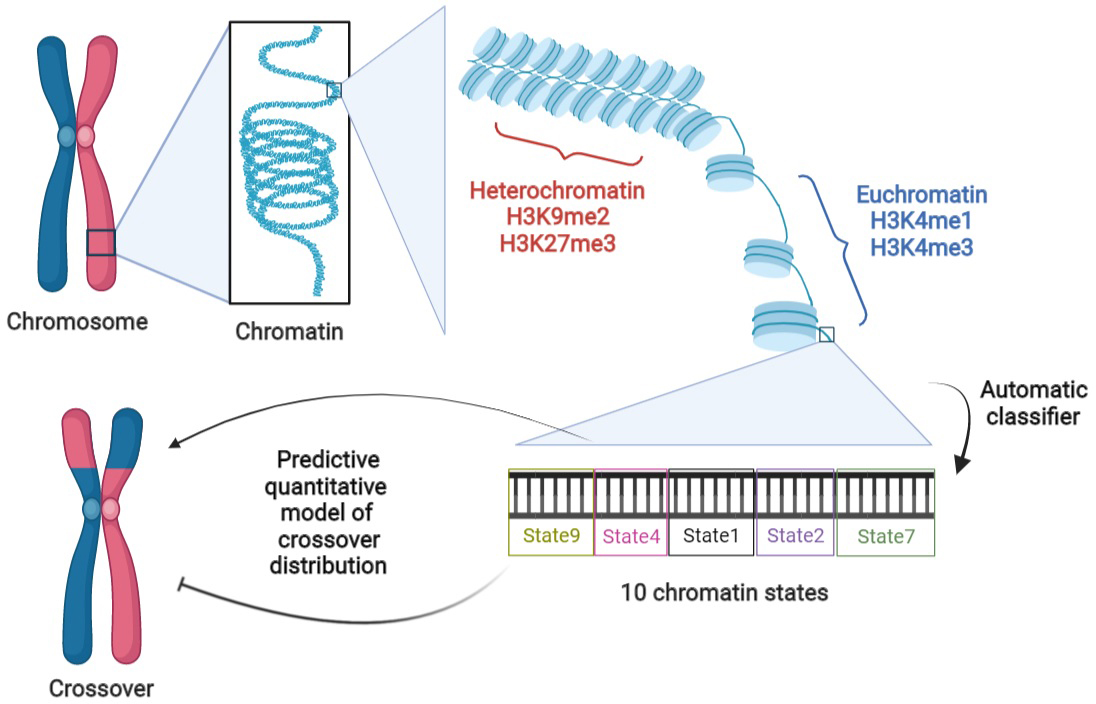A quantitative model of crossover landscapes
Genetic recombination occurs in meiosis through a complex sequence of events that starts with the active formation of DNA double strand breaks and ends with crossovers or conversions after DNA repair. Driving the genome reshuffling, crossovers significantly participate in genome evolution and the development of lines used by breeders. However, the factors controlling the location and frequency of crossover formation are still not completely understood. Among plants, Arabidopsis thaliana has the largest crossover dataset to date, with abundant public genomic and epigenomic data available for addressing this challenge by quantitative modeling.
In a study published in Quantitative Plant Biology, researchers from IPS2 (Team REGARN) and GQE-Le Moulon have established a quantitative model of crossover landscapes using a summarized epigenetic status, the size of intergenic regions, and the divergence between homologous chromosome sequences. It was found that the epigenetic status associated with intergenic regions recruits more crossovers than genic or heterochromatic regions. Furthermore, the crossover rate per Mb was reduced in intergenic regions smaller than 1.5 kb and in regions where the homologous chromosome sequences are identical. Taken together, these features were integrated into a predictive model that can reproduce much of the variation of A. thaliana experimental recombination landscapes

Le 28/03/2022
